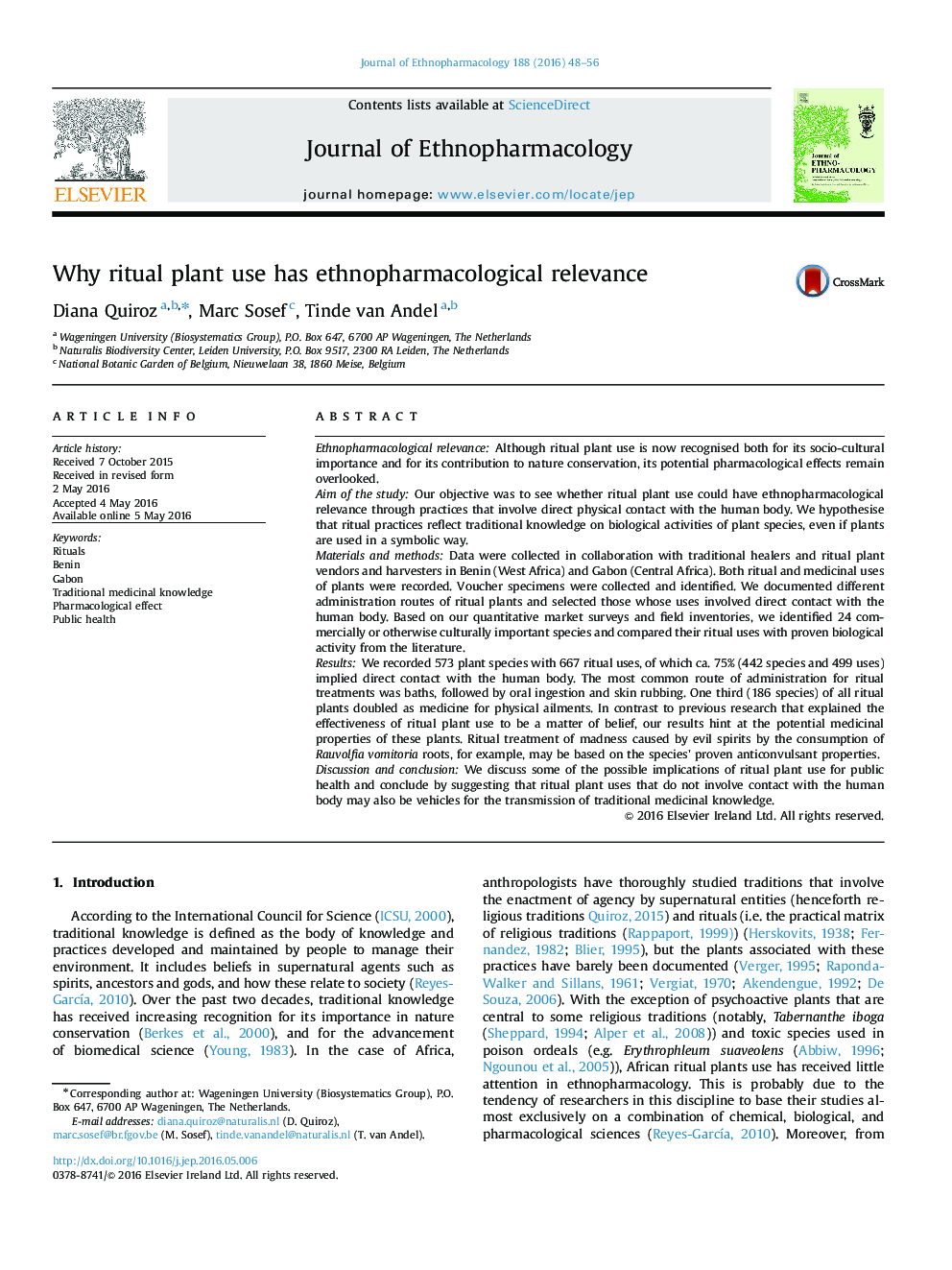| کد مقاله | کد نشریه | سال انتشار | مقاله انگلیسی | نسخه تمام متن |
|---|---|---|---|---|
| 2544745 | 1560374 | 2016 | 9 صفحه PDF | دانلود رایگان |
Ethnopharmacological relevanceAlthough ritual plant use is now recognised both for its socio-cultural importance and for its contribution to nature conservation, its potential pharmacological effects remain overlooked.Aim of the studyOur objective was to see whether ritual plant use could have ethnopharmacological relevance through practices that involve direct physical contact with the human body. We hypothesise that ritual practices reflect traditional knowledge on biological activities of plant species, even if plants are used in a symbolic way.Materials and methodsData were collected in collaboration with traditional healers and ritual plant vendors and harvesters in Benin (West Africa) and Gabon (Central Africa). Both ritual and medicinal uses of plants were recorded. Voucher specimens were collected and identified. We documented different administration routes of ritual plants and selected those whose uses involved direct contact with the human body. Based on our quantitative market surveys and field inventories, we identified 24 commercially or otherwise culturally important species and compared their ritual uses with proven biological activity from the literature.ResultsWe recorded 573 plant species with 667 ritual uses, of which ca. 75% (442 species and 499 uses) implied direct contact with the human body. The most common route of administration for ritual treatments was baths, followed by oral ingestion and skin rubbing. One third (186 species) of all ritual plants doubled as medicine for physical ailments. In contrast to previous research that explained the effectiveness of ritual plant use to be a matter of belief, our results hint at the potential medicinal properties of these plants. Ritual treatment of madness caused by evil spirits by the consumption of Rauvolfia vomitoria roots, for example, may be based on the species' proven anticonvulsant properties.Discussion and conclusionWe discuss some of the possible implications of ritual plant use for public health and conclude by suggesting that ritual plant uses that do not involve contact with the human body may also be vehicles for the transmission of traditional medicinal knowledge.
Figure optionsDownload high-quality image (371 K)Download as PowerPoint slide
Journal: Journal of Ethnopharmacology - Volume 188, 21 July 2016, Pages 48–56
